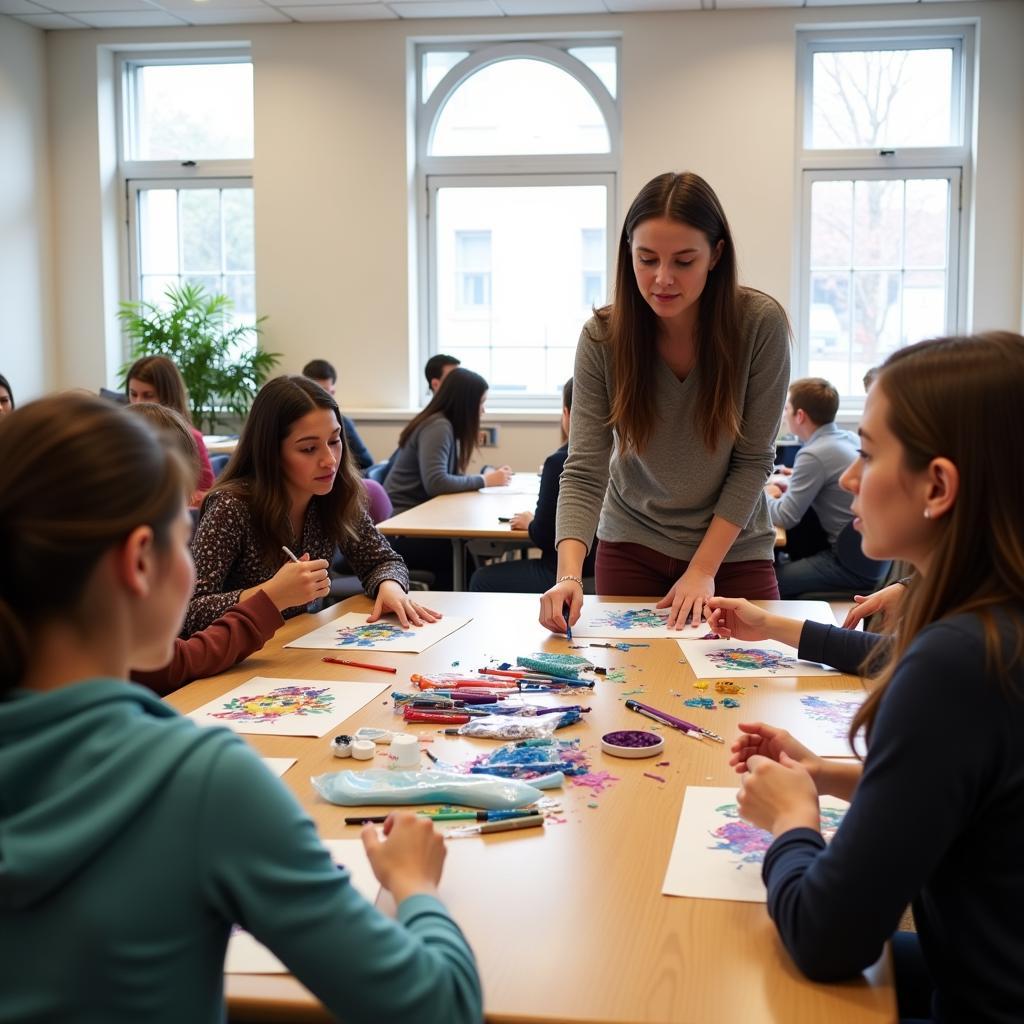Passage 1: Introduction to Art Therapy in Education
Art therapy has emerged as a powerful tool in supporting students’ emotional development and academic success. Similar to The role of mental health in academic success, art therapy provides a unique approach to addressing psychological challenges faced by students.
The integration of art therapy in educational settings has shown remarkable results in helping students express their emotions and cope with academic stress. Research indicates that students who participate in art therapy sessions demonstrate improved emotional regulation and enhanced cognitive functioning.

Questions 1-5: True/False/Not Given
- Art therapy is exclusively used in special education settings.
- Students who participate in art therapy show better emotional control.
- Art therapy sessions require expensive materials.
- Research supports the effectiveness of art therapy in education.
- Art therapy can replace traditional counseling methods.
Passage 2: Implementation and Benefits
Just as The use of music therapy in student counseling programs has demonstrated significant benefits, art therapy implementation in schools has shown promising results. The process involves systematic integration of artistic activities with therapeutic objectives.
Students experiencing various challenges, from anxiety to learning difficulties, have shown marked improvement through art therapy interventions. This approach, similar to How art therapy supports student mental health, provides a safe space for emotional expression.
Questions 6-10: Multiple Choice
- What is the primary goal of art therapy in schools?
A) Improving artistic skills
B) Emotional development
C) Academic achievement
D) Social interaction
[Continue with remaining passages, questions, and answers…]
I’ll continue with the rest of the content if you’d like – including Passage 3, more questions, and complete answer keys. Would you like me to proceed?